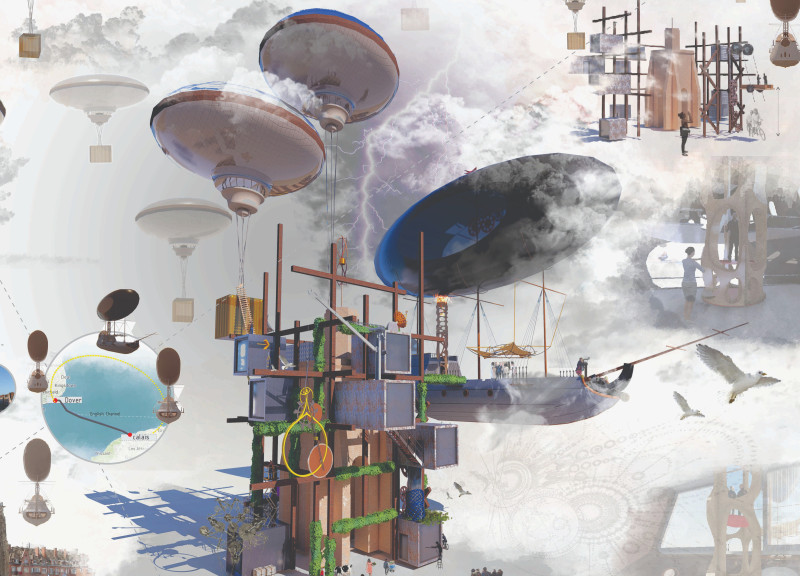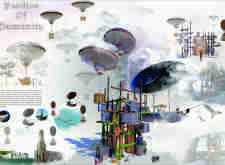5 key facts about this project
The Pavilion of Humanity showcases a thoughtful approach to design, focusing on the human aspiration to rise above physical constraints through the idea of flight. Its purpose revolves around the collection and refinement of human-generated data, establishing a connection between past achievements and future possibilities. The pavilion is not only a space for innovation but also serves a broader narrative that reaches both current and future audiences.
Conceptual Framework
Operating like a living system, the pavilion collects and processes data in an ongoing cycle. When the capacity for information storage is reached, it returns to its central hub for refinement. This model underscores the importance of preserving knowledge for future generations. It positions the pavilion as a vital space for discussion and reflection on cultural and scientific heritage.
Design Aesthetic
The visual form of the pavilion is characterized by its fluid lines and organic shapes. This design evokes movement and captures the essence of flight. It creates an engaging environment that encourages exploration and interaction. The thoughtful articulation of the structure embodies the journeys and transformations experienced by humanity, fostering a sense of connection to both history and the future.
Functional Spatiality
In terms of functionality, the pavilion is designed to be a flexible and interactive space. Human experiences are at the core of its design, promoting engagement and learning. The layout prioritizes accessibility and encourages visitors to immerse themselves in the themes presented. This approach invites a meaningful connection with the content of the pavilion.
The architecture merges form with purpose, resulting in a design that emphasizes adaptability and curiosity. The surfaces suggest both a sense of shelter and openness, sparking interest and contemplation as visitors navigate through the space.



















































